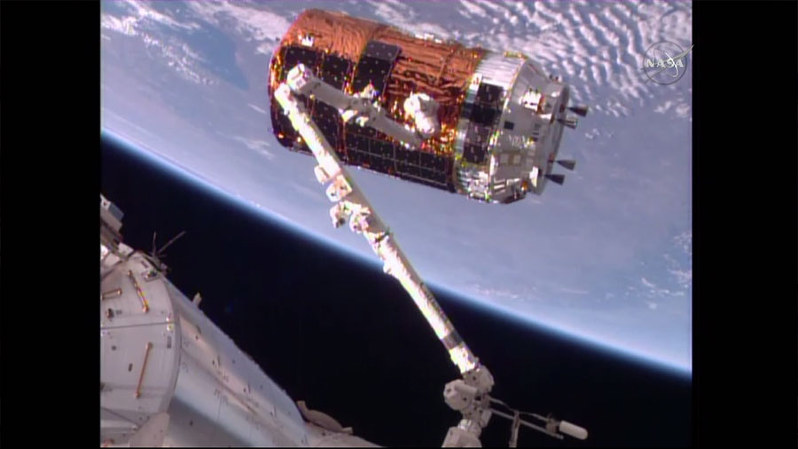.
27.01.2017

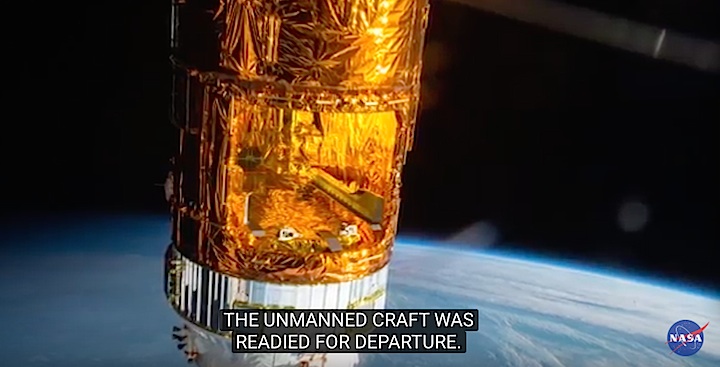
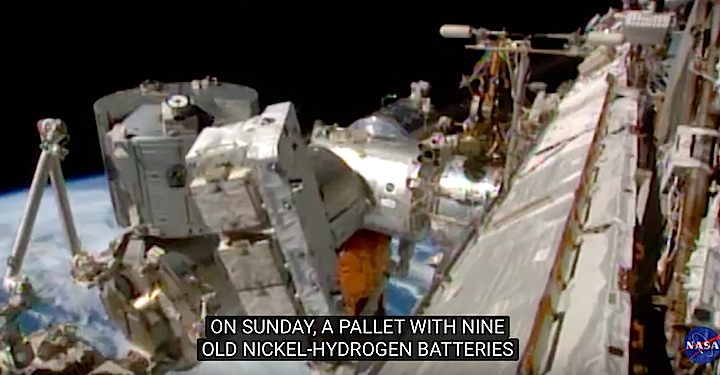
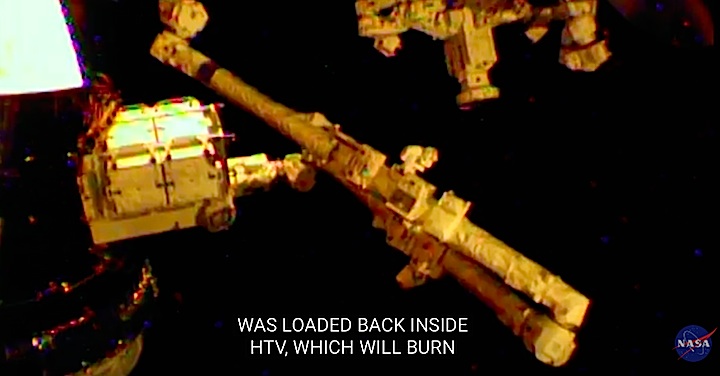
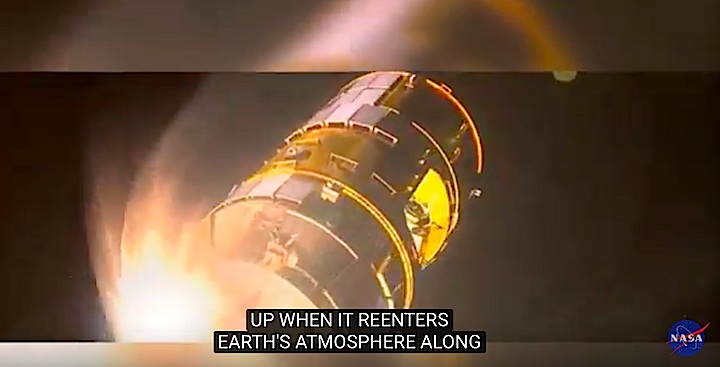

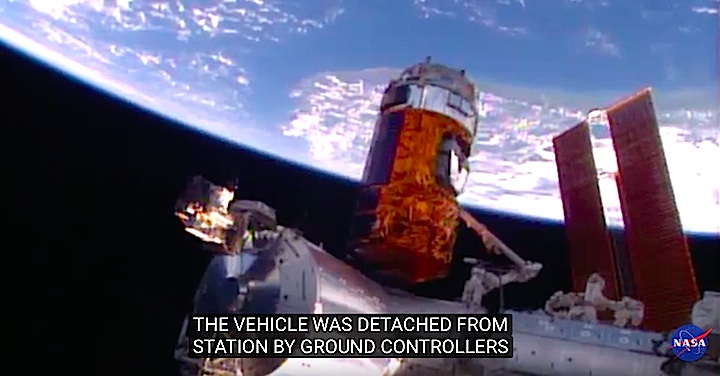
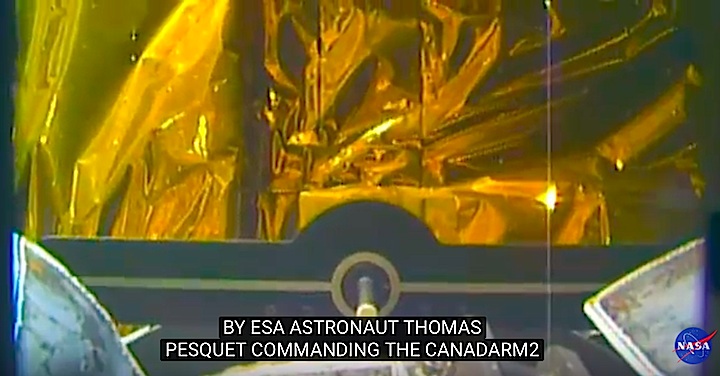
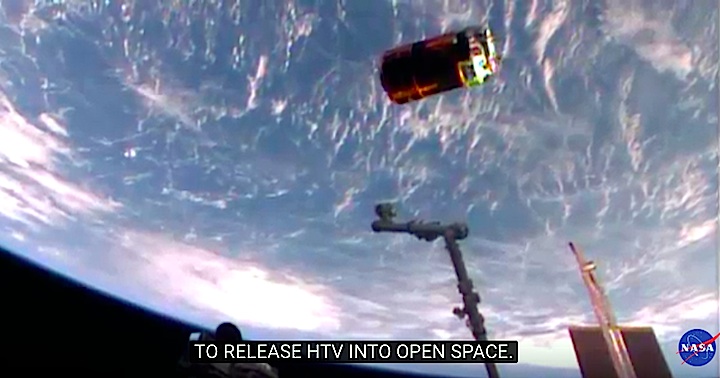
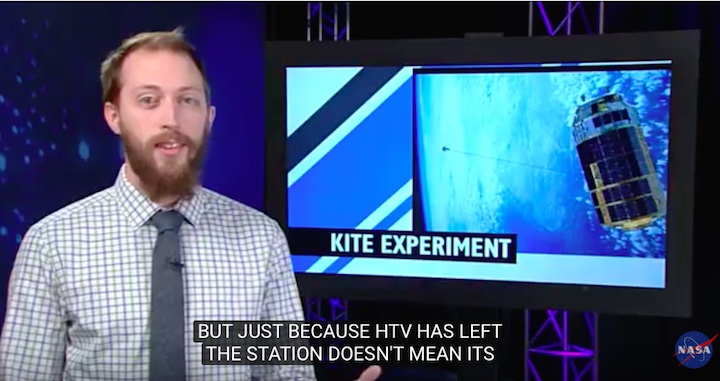
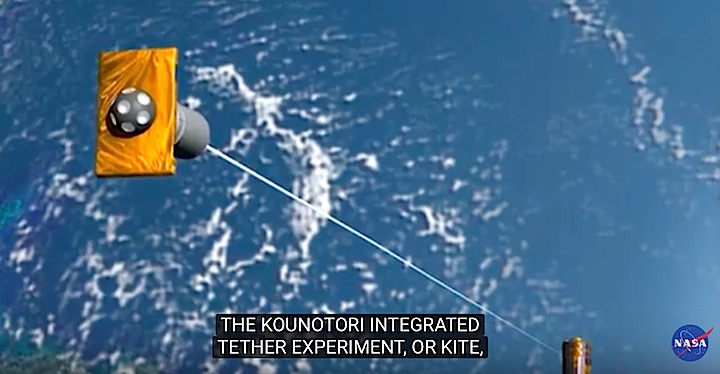
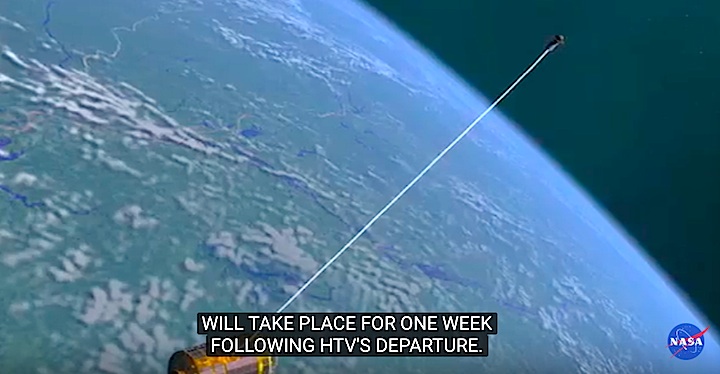
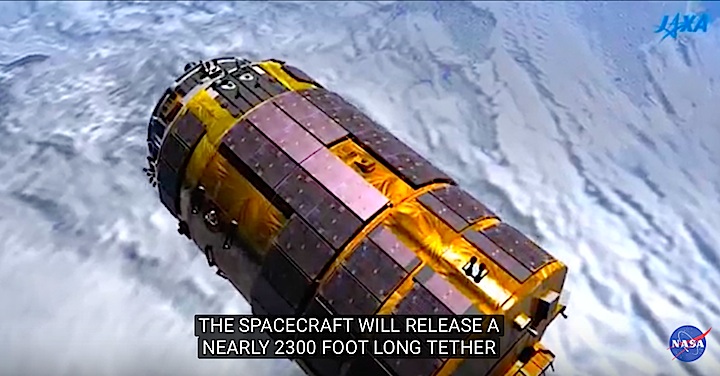
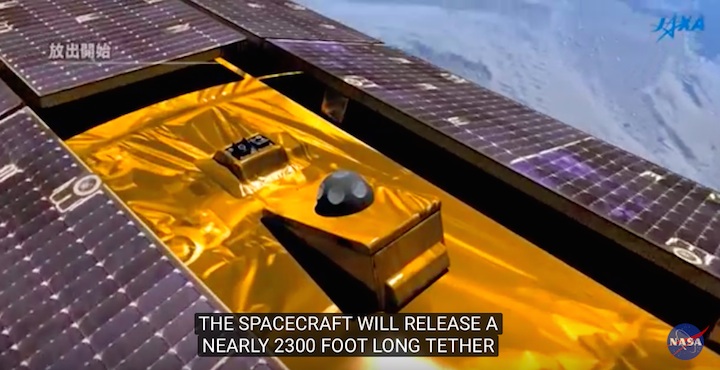
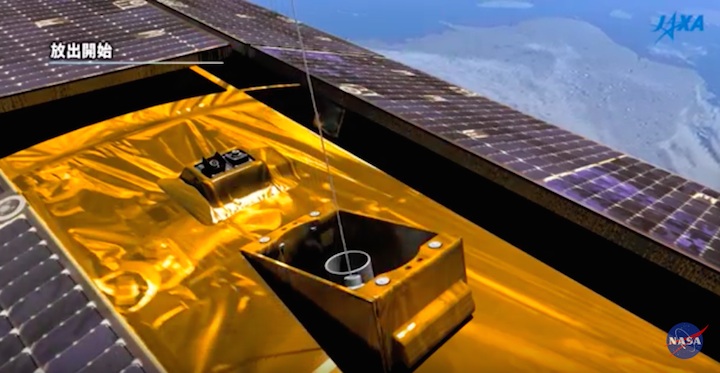
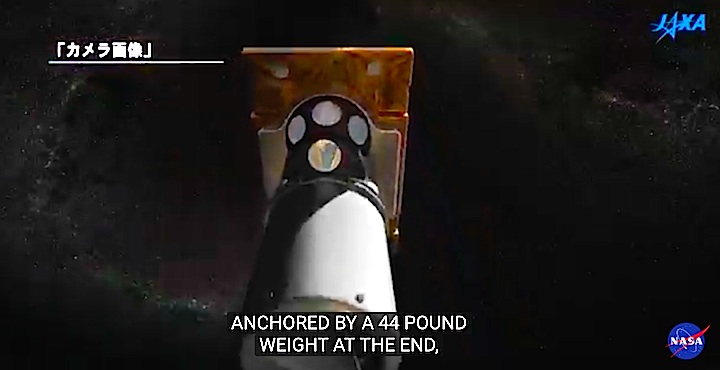
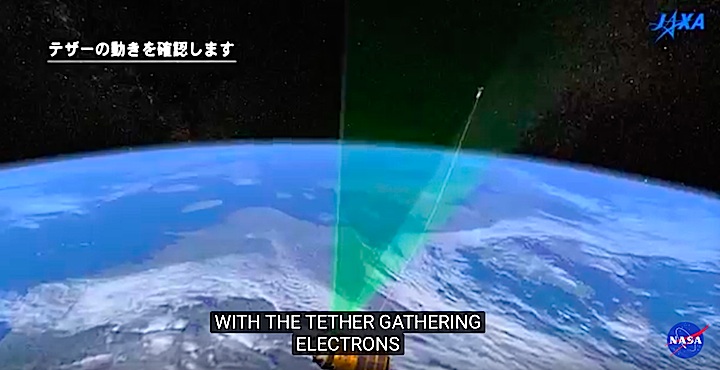
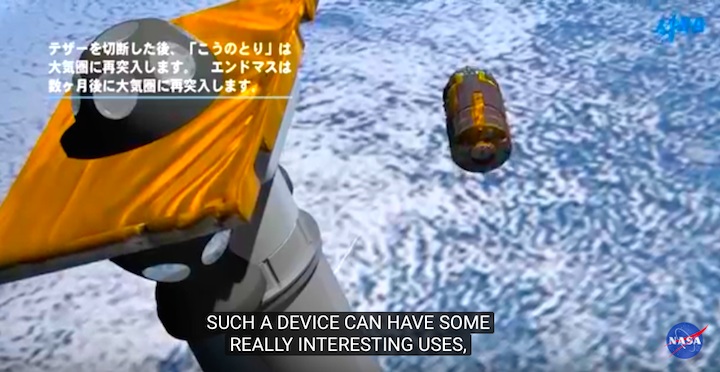
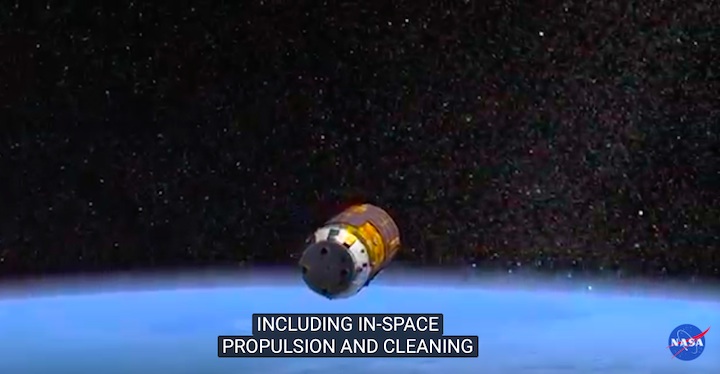
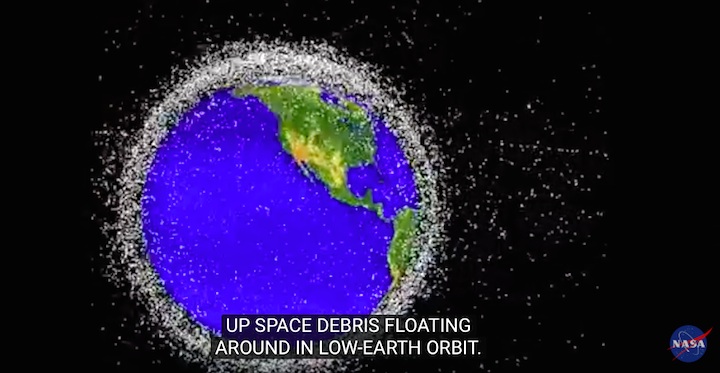
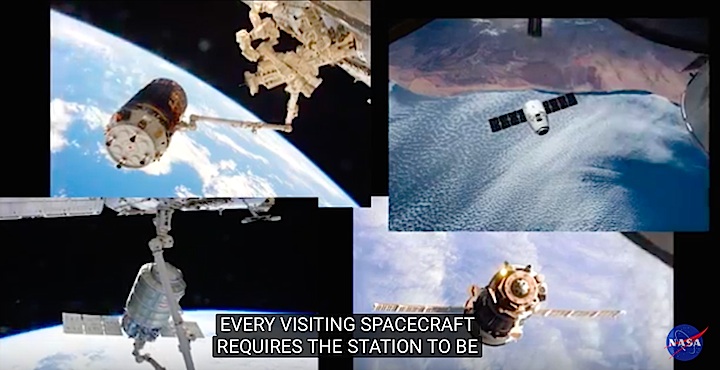

The Japanese HTV-6 resupply ship is pictured just before its release on astronaut Shane Kimbrough’s 100th day in space. Credit: @Astro_Kimbrough
Expedition 50 Flight Engineer Thomas Pesquet of ESA (European Space Agency) and Commander Shane Kimbrough of NASA commanded the International Space Station’s Canadarm2 robotic arm to release a Japanese cargo vehicle at 10:46 a.m. EST. At the time of release, the station was flying 261 statute miles above the south Atlantic Ocean. Earlier, ground controllers used the robotic arm to unberth the cargo craft.
Japan Aerospace Exploration Agency’s (JAXA’s) H-II Transport Vehicle-6 (HTV-6) arrived to the space station Dec. 13, after launching from the Tanegashima Space Center in southern Japan Dec. 9.
The cargo ship will now move to a safe distance below and in front of the station for about a week’s worth of data gathering with a JAXA experiment designed to measure electromagnetic forces using a tether in low-Earth orbit. JAXA is scheduled to deorbit the craft on Feb. 5. Loaded with trash, the vehicle will burn up harmlessly over the Pacific Ocean.
Quelle: NASA
-
Update: 28.01.2017
.
JAXA to try out new technique designed to remove debris from space
A groundbreaking experiment designed to simulate the removal of debris from space is scheduled to begin in the evening on Jan. 28.
The experiment, which will be carried out by the Japan Aerospace Exploration Agency (JAXA) over a seven-day period, aims to make use of the earth's magnetic field and an electrified tether to slow space debris and make it fall to the earth's atmosphere before safely burning away.
Space debris from old satellites and defunct rocket hulks is a problem for those involved in space exploration. With an estimated 520,000 pieces of waste -- ranging from one centimeter to 10 centimeters or above in size -- there is a real danger of unwanted collisions between pieces of space debris and the International Space Station (ISS) or satellites.
In the experiment, the unmanned cargo spacecraft "Kounotori 6," which was used to resupply the ISS with items such as food and batteries as well as experimental equipment, will represent a piece of space junk. JAXA will attach a metallic rope, known as a "tether," to the spacecraft. By electrifying the extended tether, it is thought that this will cause a reaction with the Earth's magnetic field, which in turn, should create a brake-like force. Consequently, the altitude of the space debris is expected to drop -- due to the Earth's gravitational pull. Once this has occurred, the debris should burn away, as a result of the resulting friction with the air in the Earth's atmosphere.
The "Kounotori 6" separated from the ISS in the early hours of Jan. 28, and JAXA is on the verge of extending the tether -- which is about 700 meters long -- at 10 p.m. on the same day. First of all, it will be seen whether or not the tether will extend properly, and also whether it can carry an electric current. If successful, JAXA will develop a satellite that can attach a tether to space debris further to remove such waste, aiming to put it into actual use around 2025.
"Kounotori 6" was launched into space in December 2016. After this tether related experiment, it is expected to fall back down to the earth's atmosphere and burn up safely.
Quelle: The Mainichi
-
Update: 1.02.2017
.
Japan's 'space junk' collector in trouble

TOKYO —
An experimental “space junk” collector designed to pull rubbish from the Earth’s orbit has run into trouble, Japanese scientists said Tuesday, potentially a new embarrassment for Tokyo’s high-tech program.
Over 100 million pieces of garbage are thought to be whizzing around the planet, including cast-off equipment from old satellites and bits of rocket, which experts say pose a growing threat to future space exploration.
Scientists at the Japan Aerospace Exploration Agency (JAXA) are testing an electrodynamic ‘tether’—created with the help of a fishing net company—to slow the junk down and bring it into a lower orbit.
The hope was that the clutter—built up after more than five decades of human space exploration—would enter the Earth’s atmosphere and burn up harmlessly long before it has a chance to crash to the planet.
About 700 meters in length, the tether was due to be extended out from a cargo ship launched in December carrying supplies for astronauts at the International Space Station.
But JAXA says it is not sure if the tether, made from thin wires of stainless steel and aluminium, successfully deployed or not.
JAXA will continue trying to remedy the situation before the cargo ship is expected to reenter the atmosphere on Saturday, the agency added.
The trouble comes just two weeks after JAXA had to abort a mission intended to use a mini-rocket to send a satellite into orbit after the spacecraft stopped sending data to ground control shortly after liftoff.
A pricey ultra-high-tech satellite launched in February last year to search for X-rays emanating from black holes and galaxy clusters but was ultimately abandoned after researchers said contact with it had been lost.
Quelle: Japan Today
-
Update: 4.02.2017
.
 |
HTV搭載導電性テザー実証実験(KITE)(6分13秒) 2016年度 制作 |
地球周回低軌道上のスペースデブリ(Space debris, 以下「デブリ」)を除去するための推進系として、導電性テザー(Electrodynamic Tether,EDT)推進を有望な候補の1つと考えています。EDTは地球磁場との干渉を利用して軌道降下させる燃料不要の高効率な推進系です。デブリ除去実現に向けた最初のステップとして、EDT要素技術実証を行うために当機構ではHTV(こうのとり)を利用したHTV搭載導電性テザー実証実験(Kounotori Integrated Tether Experiments,KITE, "カイト"と呼んでいます)を計画しています。
「こうのとり」の本来のミッションである国際宇宙ステーション(ISS)への物資補給完了後、大気圏再突入までの期間中の7日間を使って、宇宙空間でテザーの伸展や電子源の駆動、電圧発生評価など世界初となる導電性テザーに関する実証実験を行う予定です。

KITE実験中のこうのとりとKITE実験装置の想像図

KITE構成図
HTVの非与圧部背面よりテザーを格納したエンドマスを保持放出機構により放出して、700m級のテザーを伸展します。伸展中及び伸展後のエンドマス運動を、HTVのランデブセンサで計測することで、テザー伸展特性データを取得します。またエンドマス放出時の様子と振動運動の様子はカメラでもモニタします。次にHTV側に搭載した電界放出型電子源から電子を放出することで10mA級のテザー電流を駆動します。テザー電流は電子源制御部で計測します。電子放出に伴うHTV自身の電位変動データおよび相互作用する周囲プラズマ特性データの取得を行うために、静電プローブ機能付き帯電電位モニタを搭載しています。また、発生するローレンツ力を算出するために磁気センサを搭載しています。実証実験後は切断機構によりテザーを切断し、こうのとりは大気圏に再突入します。これら搭載ミッション機器制御及び電源供給を行うために、データ処理装置/電力制御器も搭載しています。

KITE実験の流れ
これまで5回の宇宙ステーション補給ミッションに成功している「こうのとり」に実験システムを搭載することで、こうのとりの信頼性の高いセンサや機能、例えばランデブーセンサ、電力、通信インフラ、エンジンなどが利用できるため、専用の小型衛星で実証するよりも信頼性が高く効率的に実証実験が行えます。また、実証機器そのものも、例えばテザー運動の観測に必要なのはランデブセンサ用のリフレクタのみでよいなど、簡易で故障確率を低減した実証機器とすることができました。本実証実験で期待しているベアテザーの伸展・電子収集(電流が流れる)や電子源からの電子放出は無重力、宇宙プラズマ環境を模擬する地上試験が不可能なため、性能確認には実際の宇宙環境での実証が不可欠であり、目標を達成できれば世界初の成果となることが期待されています。

KITE実験中の想像図
参考文献
- Ohkawa, Y., Kawamoto, S., et al.: Preparation for On-Orbit Demonstration of Electrodynamic Tether on HTV, Transactions of JSASS, Aerospace Technology Japan, Vol.14, No. ists30, 2016.
- Kawamoto, S., Ohkawa, Y., et al.: A Flight Experiment of Electrodynamic Tether Using HTV toward the Realization of Debris Removal, Transactions of JSASS, Aerospace Technology Japan, Vol.14, No. ists30, 2016.
- Iki,K., Kawamoto, S., et al.: Expected On-orbit Tether Deployment Dynamics on the KITE Mission, Transactions of JSASS, Aerospace Technology Japan, Vol.14, No. ists30, 2016.
- 大川恭志, 河本聡美: 地球磁場を利用したスペースデブリ除去技術の研究," 応用物理, 第85巻, 第10号, 2016.
- Okumura, T., Miura, Y., et al.: Development of Potential Monitor and Electron Emitter Module for EDT Experiment on HTV-6, 14th Spacecraft Charging Technology Conference on website, ESA/ESTEC, Noordwijk, NL, 04-08 APRIL 2016.
- 壹岐賢太郎,河本聡美,他: HTV搭載導電性テザー実証実験(KITE)におけるテザー伸展停止用ブレーキの開発状況,第59回宇宙科学技術連合講演会,3L18,2015.
- 井上浩一,平子敬一他: 導電性テザー実証実験計画, 第57回宇宙科学技術連合講演,2013.
Quelle: JAXA

